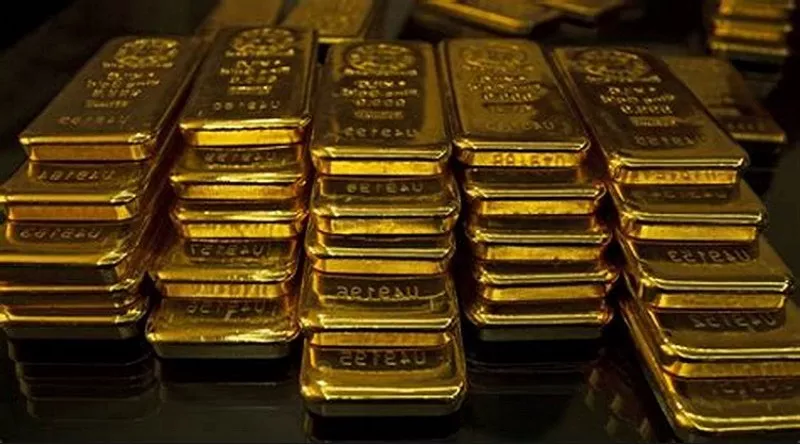The unprecedented surge in gold prices this year has been largely driven by substantial central bank demand, raising questions about the identity of the primary buyers. While much of the gold acquired is reported to the International Monetary Fund (IMF), a significant amount remains unaccounted for. According to the World Gold Council, an astonishing 67% of central bank purchases in the second quarter were not reported, contributing to a record 483 tonnes of gold acquired by central banks in the first half of 2024.
Analysts suggest that Saudi Arabia may be a major player in this undeclared gold acquisition. Jan Nieuwenhuijs, a Precious Metals Analyst at Money Metals, posits that since 2022, Saudi Arabia has accumulated approximately 160 tonnes of gold. Historically, the kingdom’s gold imports have been sensitive to price fluctuations, often decreasing during price surges or even leading to increased exports. However, since 2022, there has been a consistent rise in Saudi gold imports.
“Following the West’s immobilization of Russian dollar assets in February 2022, countries with diplomatic tensions with the West have increasingly turned to physical gold as an alternative to dollars. Saudi Arabia has transitioned from being price-sensitive to becoming a price driver in the gold market,” Nieuwenhuijs stated.
He further remarked that the rise in Saudi gold imports coincides with the World Gold Council’s increasing estimates of unreported gold acquisitions. In an interview with Kitco News, Nieuwenhuijs explained that it is not surprising for Saudi Arabia to keep its gold purchases discreet, particularly as it maintains a strategic alliance with the United States. Publicizing significant gold holdings could inflate prices, reducing the effectiveness of future purchases.
Several analysts have drawn parallels between Saudi Arabia’s gold buying and China’s aggressive purchasing strategy initiated in late 2021, which indicated to Western nations that the U.S. dollar was facing competition as the world’s reserve currency. Political analysts note that the U.S. has drawn a clear line between allies and adversaries since weaponizing the dollar against Russia in response to the Ukraine invasion, placing Saudi Arabia in a unique position.
Historically, Saudi Arabia helped establish the “petrodollar” system in the 1970s by conducting all oil transactions in U.S. dollars. Over the years, this relationship has included significant military cooperation. However, recent geopolitical developments, particularly Saudi Arabia’s inclusion in the BRICS trading bloc alongside Brazil, Russia, India, China, and South Africa, have strained its ties with the West.
“Saudi Arabia and the U.S. share a long-standing diplomatic relationship, making it unlikely for the kingdom to sever ties abruptly. Any shift in this relationship is likely to be gradual,” Nieuwenhuijs noted, adding that while the Saudis continue to invest surplus funds in U.S. Treasuries, they are also quietly increasing their gold holdings.
Speculating on the secrecy surrounding these gold purchases, Nieuwenhuijs suggested that Saudi Arabia may be collaborating with bullion banks to facilitate acquisitions without attracting attention. He explained, “Central banks often purchase gold in Switzerland and London, where bullion banks handle logistics and customs. By analyzing trade statistics, I found a significant correlation between Saudi Arabia’s gold imports and exports from Switzerland since Q2 2022, indicating ongoing acquisitions.”
However, analysts consulted by Kitco News pointed out that validating Nieuwenhuijs’s claims poses challenges, as bullion banks typically handle smaller one-kilogram bars, whereas central banks transact in larger 14-kilogram bars recognized by the London Bullion Market Association.
There is historical precedence for central banks concealing their gold purchases. For instance, the Saudi Arabian Monetary Authority last updated its official gold reserves in February 2008, revealing an increase of 180 tonnes, an acquisition that likely did not occur in a single month.
China is another nation notorious for its clandestine gold accumulation. In April 2009, the People’s Bank of China announced it had purchased 454 tonnes over six years, followed by a 604-tonne acquisition over three years disclosed in 2015. Despite halting reports of its gold purchases earlier this year, analysts speculate that China continues to stockpile gold.
With the U.S. dollar facing growing competition as the world’s reserve currency, Nieuwenhuijs emphasized that Saudi Arabia’s discretion regarding its gold holdings is not surprising amid economic uncertainties. While discussions around the potential establishment of a BRICS currency circulate, Nieuwenhuijs believes such a development is unlikely in the near term, citing the disparate interests among BRICS nations.
He concludes by suggesting that Saudi Arabia is strategically accumulating gold as a hedge against future economic events, hinting at a potential shift in the global monetary landscape. “I don’t believe they are making extensive gold transactions for trade settlements yet. Rather, Saudi Arabia appears to be in the early stages of building a gold reserve that may eventually play a role in a new economic system, potentially at the expense of the dollar,” he asserted.
You Might Be Interested In
- China Central Bank Gold Purchases to Continue Driving Demand
- North American Investors Lead Gold ETF Inflows Amid Rate Cuts and Geopolitical Tensions
- Bitcoin on Path to Become the 21st-Century Digital Gold, Says Deutsche Bank Strategist


